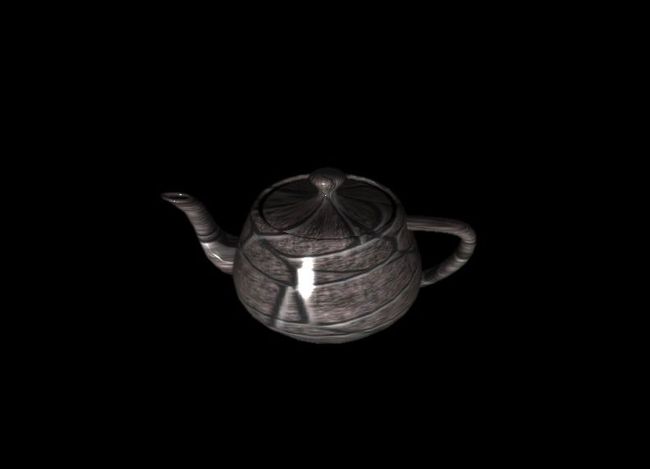Deferred Shading
Deferred Shading
Deferred Shading是现在比较流行实时渲染方式,这种渲染方式能把Geometry和Lighting之间的耦合解开,把Forward Shading的Geometry Pass*Lighting Pass复杂度下降为Geometry Pass+Lighting Pass,特别适合于渲染较多动态光源的场景,本文将快速浏览实现Deferred Shading的各个阶段,并提供一个带源代码的简单的例子程序,这个程序可以在SM2.0及以上的硬件上运行,通过dx9接口实现。
Deferred Shading介绍可参阅《RealTime Rendering》3rd 7.9.2、《GPU Gems2》及《GPU Gems3》。另外,《Deferred Shading Tutorial》提供了详细的OpenGL实现流程。而网上可找到示例代码有nVidia SDK 9.52以及Intel的《Deferred Rendering for Current and Future Rendering Pipelines》,网址是http://software.intel.com/en-us/articles/deferred-rendering-for-current-and-future-rendering-pipelines/。
Deferred Shading可分为四个阶段:Geometry、Lighting、Post-Processing和MergeOutput,其中第三阶段可选。各个阶段分别输出到texture,所以,deferred shading将使用到Render To Texture(RTT)及Multiple Render Targets(MRT)。每个阶段及其对应的输出如下表:
| 阶段 |
输出 |
作用 |
| Geometry |
G-Buffer |
记录整个场景的几何信息例如normal、depth(position)、diffuse color、specular intensity等 |
| Lighting |
P-Buffer1 |
使用G-Buffer信息逐像素计算光照 |
| Post-Processing |
P-Buffer2 |
后处理,例如motion blur、Bloom、Anti-Aliasing等 |
| MergeOutput |
BackBuffer |
混合之前所有Buffer的数据,输出到BackBuffer |
GeometryStage G-Buffer
此阶段是把场景内所有3D模型的几何信息都渲染(记录)到G-Buffer内,G-Buffer的分辨率是屏幕分辨率,以便后续阶段进行逐像素渲染。G-Buffer可以有多个texture,通常,使用MRT在一个Batch内完成这些属性的渲染。此阶段,场景的几何信息都以texture coordinate的方式插值并投影到G-Buffer上,所以,需要设置好各个space的转换矩阵。示例程序在此阶段输出normal、depth、diffuse color及specular intensity到G-Buffer。示例程序在view space计算光照,所以这里输出的normal是转换到view space的值。这里输出的depth是已转换到normalized device space,在计算光照时,depth配合project matrix可以恢复出view space下的坐标值。G-Buffer输出如下图:
由上往下分别是normal(view space)、depth、diffuse color、specular intensity。
LightingStage P-Buffer1
此阶段使用光照模型、光源位置结合G-Buffer的几何信息计算G-Buffer上每个像素的颜色,如果有多个光源,每个光源执行此阶段一次,并把计算结果累积到P-Buffer上。再次提示,示例程序是在view space上计算光照,所以G-Buffer上的depth需要恢复为view space的position。要理解恢复view space position的过程,先来认识一些概念:
G-Buffer上的depth是normalized device space,而view space转换到normalized device space要通过view-->homogeneous-->normalized device,其中,view-->homogeneous通过projection matrix完成;而homogeneous->normalized device则是把4d vector都除以w,而w是view space下的z。projection matrix如下 (请注意D3D使用row-major matrix并且使用pre-multipling) ,因此,我们得到homogeneous下的z是
(请注意D3D使用row-major matrix并且使用pre-multipling) ,因此,我们得到homogeneous下的z是 ,除以view space的z就是
,除以view space的z就是 等于normalized device下的depth。表达是内的z均为view space下的z,f是far plane,n是near plane。f和n是我们定义project matrix时指定并且表达式的值我们知道,所以通过上述表达式,可以求出view space下的z的值。normalized device space下的xy我们也知道,分别是texture coordinate的u*2-1及-(v*2-1),这是因为,我们要把G-Buffer点对点地渲染到P-Buffer上, texture coordinate是[0,1]要转换到[-1,1]normalized device space的xy区间。想详细了解各个空间转换及转换矩阵的推导,可参阅《RealTime Rendering》3rd及《Introduction to 3D Game Programming with DirectX 9.0c—A Shader Approach》。
等于normalized device下的depth。表达是内的z均为view space下的z,f是far plane,n是near plane。f和n是我们定义project matrix时指定并且表达式的值我们知道,所以通过上述表达式,可以求出view space下的z的值。normalized device space下的xy我们也知道,分别是texture coordinate的u*2-1及-(v*2-1),这是因为,我们要把G-Buffer点对点地渲染到P-Buffer上, texture coordinate是[0,1]要转换到[-1,1]normalized device space的xy区间。想详细了解各个空间转换及转换矩阵的推导,可参阅《RealTime Rendering》3rd及《Introduction to 3D Game Programming with DirectX 9.0c—A Shader Approach》。
当我们得到了normalized device space下的xyz以及view space下的z后,有两种方法可以回到view space,第一种方法,normalized device space的xyzw(w=1)分别乘以view space的z,回到homogeneous clip space,然后通过projection matrix的inverse matrix(projection matrix并没有真正把点投影到平面上,只是转到homogeneous space,所以这个matrix是invertable的)回到view space;第二种方法,使用projection matrix的(0,0)及(1,1)元素计算出view space的xy值,其中R是aspect ration,a是fovy。示例程序使用第二种方法。
得到每个像素的view space 坐标,就可以做逐像素光照,得到P-Buffer1,如下图:
Post-Processing P-Buffer2
示例程序进行了AA及Bloom处理。AA处理使用G-Buffer的normal作为依据,检测三角形边界并决定3x3临近像素的混合权重,混合输出中心像素。更有效的Post-Processing AA可参考MLAA及SRAA(后续文章中介绍)。Bloom就是对P-Buffer1进行纵向和横向模糊。下面是Post-Processing的输出:
MergeOutput Backbuffer
这个步骤很简单,对Post-Processing的输出进行混合并渲染到Backbuffer上就ok了,下图就是完整的渲染效果:
最后需要说明的是,示例程序使用《Introduction to 3D Game Programming with DirectX 9.0c—A Shader Approach》的框架代码及纹理。
示例程序源代码下载:http://files.cnblogs.com/rickerliang/AmbientDiffuseSpecularDemo-DeferredShading.zip
希望本文对想了解Deferred Shading的朋友有帮助。








